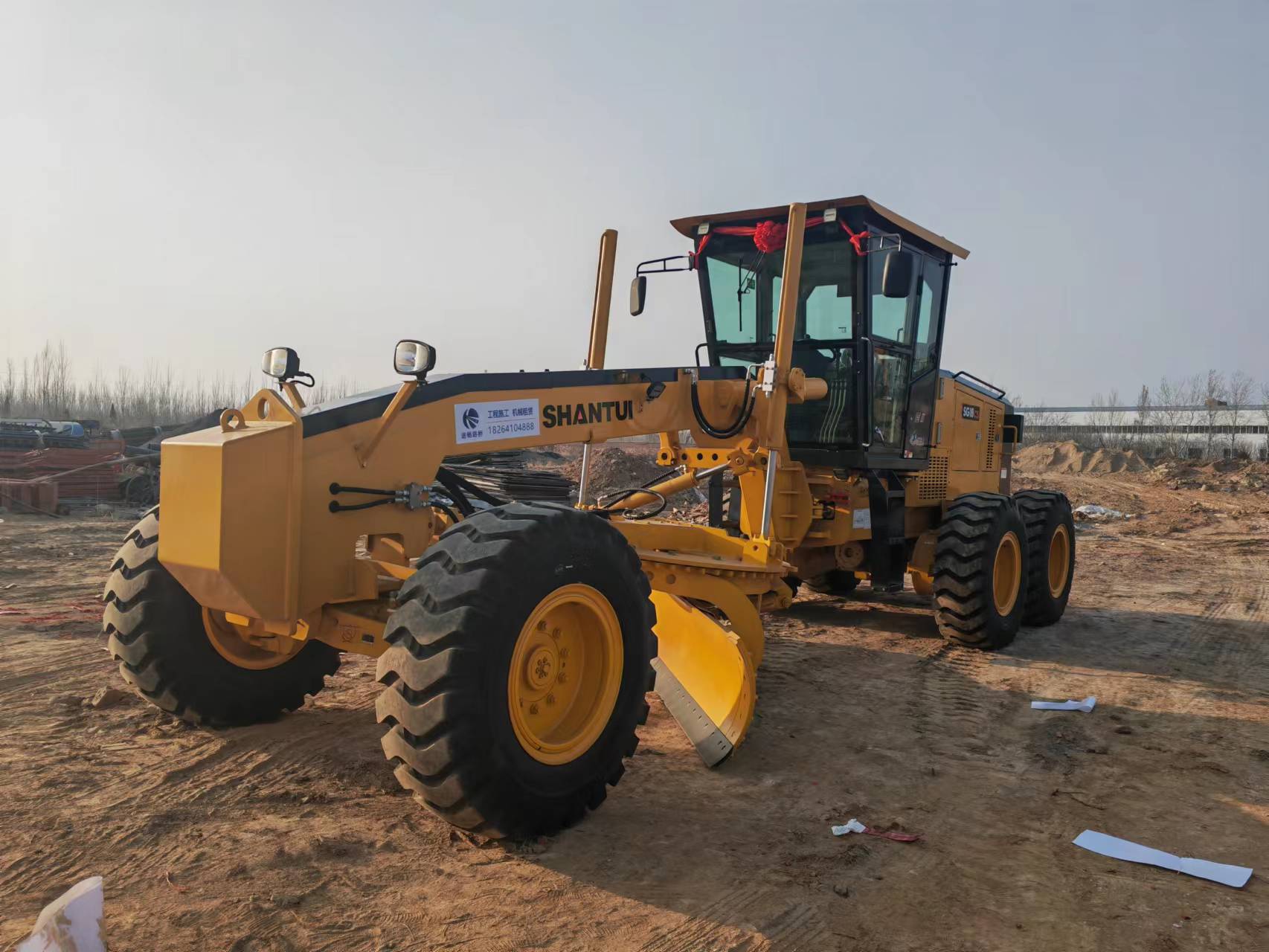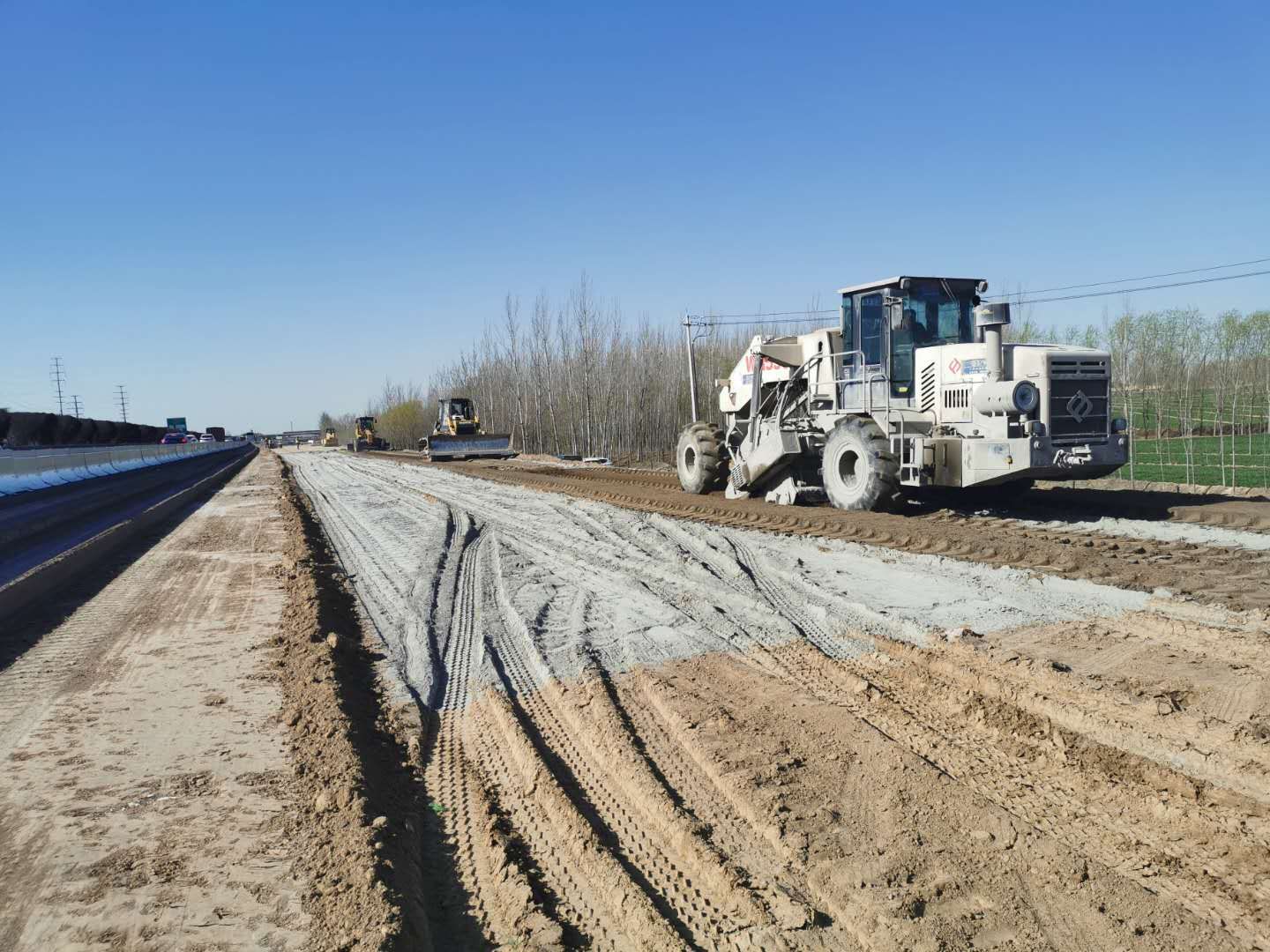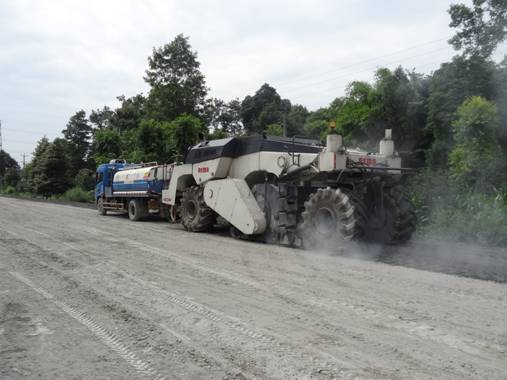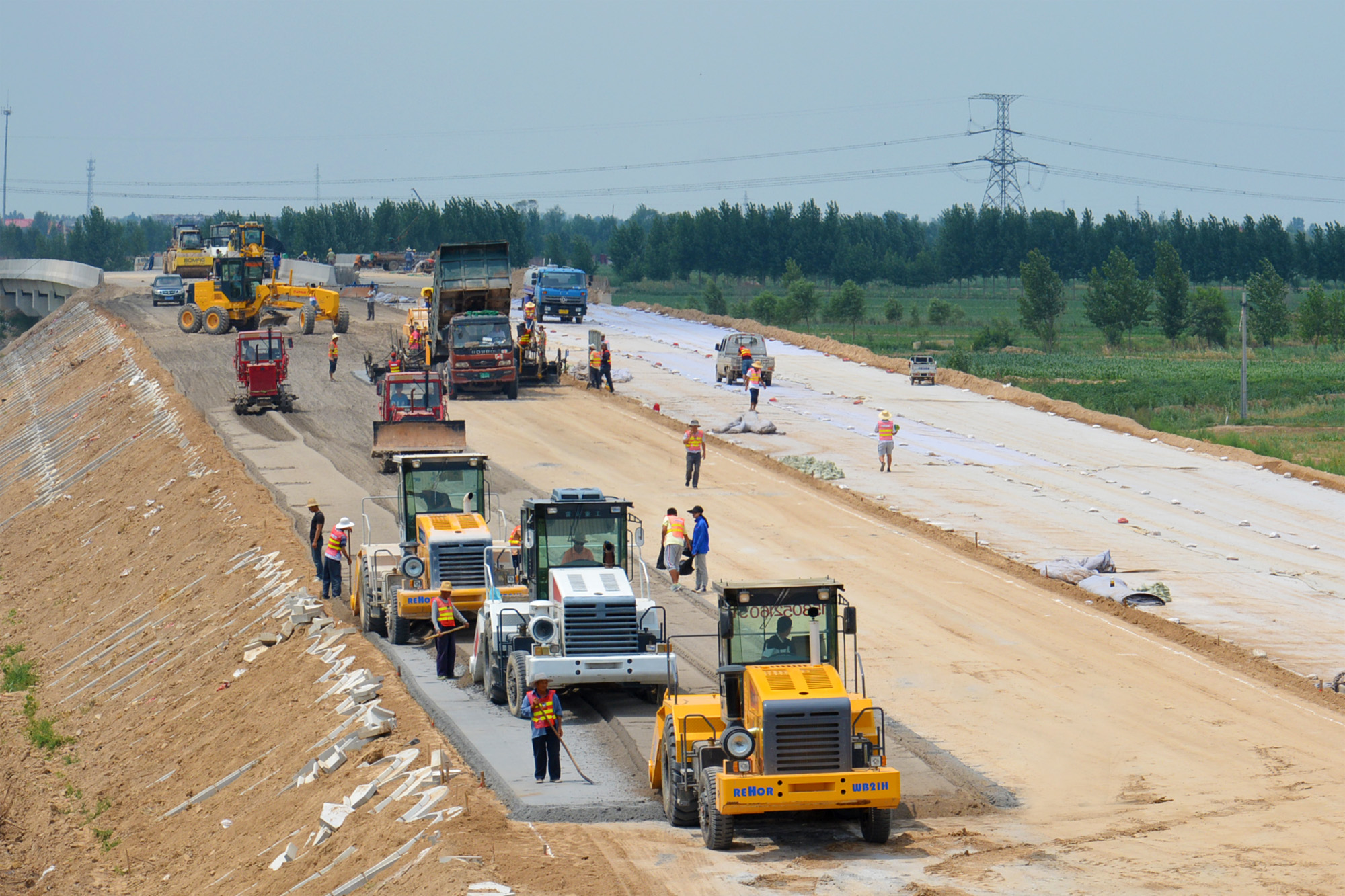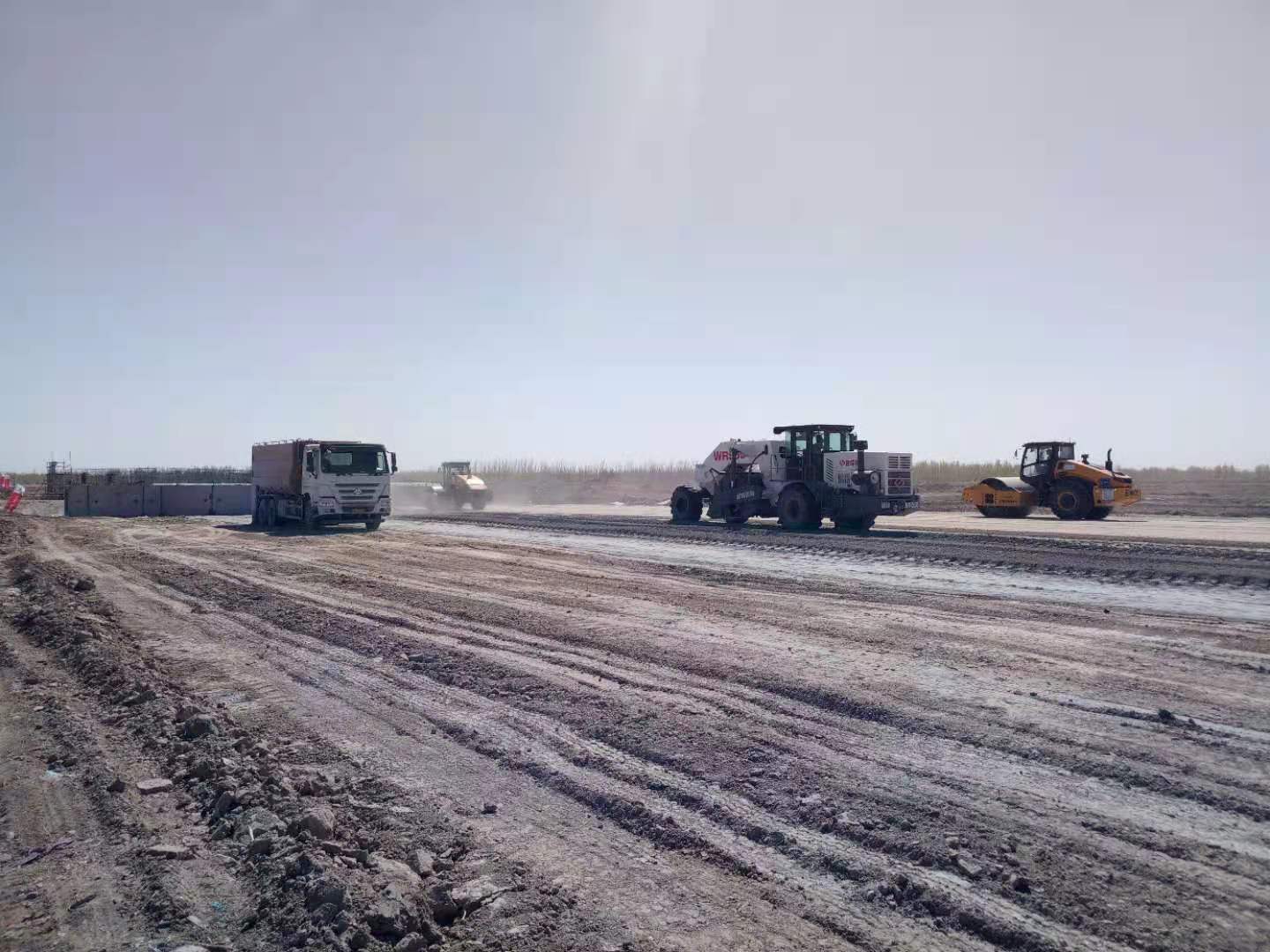
山东途畅路桥工程有限公司
联系人:石总
电话:18264104888
地址:山东省济南市槐荫区经一路273号群盛华城
公路路面养护冷再生知识汇总
旧有路面评价方法
Old pavement evaluation methods
冷再生前需要对就有路面情况进行评价。尚无专门针对冷再生的路面评价方法,多采用普通的旧路评价方法。
Before cold regeneration, it is necessary to evaluate the existing road conditions. There is no specific road surface evaluation method for cold regeneration, and ordinary old road evaluation methods are often used.
比较有代表性的方法有:同济大学“干线公路路面评价养护系统成套技术”,该方法把路面使用性能分为行驶质量、路面破损和结构承载能力三个方面,对路面破损采用扣分法,即路面损坏状况由损坏类型、严重程度、范围或密度这三个方面来表征。
A representative method is Tongji University's "Complete set of technology for evaluating and maintaining the road surface of trunk highways". This method divides the road surface performance into three aspects: driving quality, road surface damage, and structural bearing capacity. The road surface damage is characterized by three aspects: damage type, severity, range, or density, using a deduction method.
年交通部颁布并实施了《公路沥青路面养护技术规范》该规范把路面使用质量分为路面破损状况(PCI评价)、行驶质量(国际平整度指数评价)、强度(弯沉评价)及抗滑性能(横向力系数或摆式仪摆值评价)四个方面,后根据公路等级、交通量、分项路况评价结果确定维修对策。
In, the Ministry of Transport issued and implemented the "Technical Specification for Maintenance of Asphalt Pavement on Highways", which divides the quality of pavement use into four aspects: pavement damage condition (PCI evaluation), driving quality (International Roughness Index evaluation), strength (deflection evaluation), and anti-skid performance (lateral force coefficient or pendulum value evaluation). Maintenance strategies are then determined based on the evaluation results of highway grade, traffic volume, and sub road conditions.
沪宁高速公路扩建工程采用以下两种方法评价原路面结构层的损坏状况和承载力,以决定其再利用方式:
The expansion project of the Shanghai Nanjing Expressway adopts the following two methods to evaluate the damage condition and bearing capacity of the original pavement structure layer, in order to determine its reuse method:
①采用2004年弯沉检测数据(100m代表值)进行路况评价,满足设计弯沉的充分利用,不满足弯沉要求的挖除重建;
① Using the 2004 deflection detection data (100m representative value) for road condition evaluation, it meets the full utilization of design deflection, and excavates and reconstructs those that do not meet the deflection requirements;
②以间距100m将原路面分段,计算每段路的路面综合评价指数RCQI(road condition quality index),根据RCQI制定维修方案。
② Divide the original road surface into sections with a spacing of 100m, calculate the road condition quality index (RCQI) for each section, and develop a maintenance plan based on RCQI.
以上道路评价方法是从道路维护角度出发的,不是针对再生的,这些方法用于再生前评价不完全合适。为解决这个问题需进一步研究再生前评价。
The above road evaluation methods are from the perspective of road maintenance, not for regeneration, and they are not entirely suitable for pre regeneration evaluation. To address this issue, further research is needed on pre regeneration evaluation.
取料方法
Material collection method
分析了就地热再生、工厂热再生、全深度冷再生取料方法。
Analyzed the methods of geothermal regeneration, factory hot regeneration, and full depth cold regeneration for material extraction.
现场取料一般是借鉴国外经验,要求对于同一个路段,一般少要取5-6个试样,每1km路段或市政道路的每个街区少取5个,试样通常采用钻芯或小型冷铣刨机获取[2]。
On site sampling is generally based on foreign experience, requiring at least 5-6 samples to be taken for the same road section, and at least 5 samples to be taken for every 1km road section or municipal road block. Samples are usually obtained using drilling cores or small cold milling machines.
料堆取料可按照现行《公路路基路面现场测试规程》(JTG E60-2008)进行[3]。
The collection of materials from the pile can be carried out in accordance with the current "On site Testing Regulations for Highway Roadbeds and Pavements" (JTG E60-2008).
美国的问卷调查显示8个地区钻芯和铣刨,10个只钻芯,5个只铣刨。要求大粒径的范围是19mm-75mm,其中以31.75mm为常见。另外有四个地区无大粒径限制。
A survey in the United States shows that there are 8 regions for drilling and milling, with 10 regions only for drilling and 5 regions only for milling. The range of required large particle size is 19mm-75mm, with 31.75mm being the most common. In addition, there are four regions without large particle size restrictions.
铣刨料性质分析
Analysis of properties of milling and planing materials
铣刨材料研究的是集料的级配和残留沥青的性质。铣刨级配分为再生料级配和抽提后级配。
The focus of research on milling materials is on the gradation of aggregates and the properties of residual asphalt. Milling grading is divided into recycled material grading and extracted grading.
级配分析表明,较之初始级配,再生料的级配偏细,这是长期行车荷载造成的集料破碎和铣刨过程中集料被打碎导致的。进行稳定再生有时需要加入新集料才能得到恰当的级配。
The gradation analysis shows that compared to the initial gradation, the gradation of recycled materials is finer, which is caused by the crushing of aggregates caused by long-term driving loads and the crushing of aggregates during milling. Stable regeneration sometimes requires the addition of new aggregates to obtain appropriate gradation.
对于旧沥青的性能,目前分析主要其针入度、软化点、延度和粘度[4][5][6]。部分研究者用旋转薄膜烘箱试验研究了旧沥青的老化性能[7],认为旧沥青仍然可以继续老化。
For the performance of old asphalt, current analysis mainly focuses on its penetration, softening point, ductility, and viscosity [4] [5] [6]. Some researchers have studied the aging performance of old asphalt using a rotating thin film oven test [7], and believe that old asphalt can still continue to age.
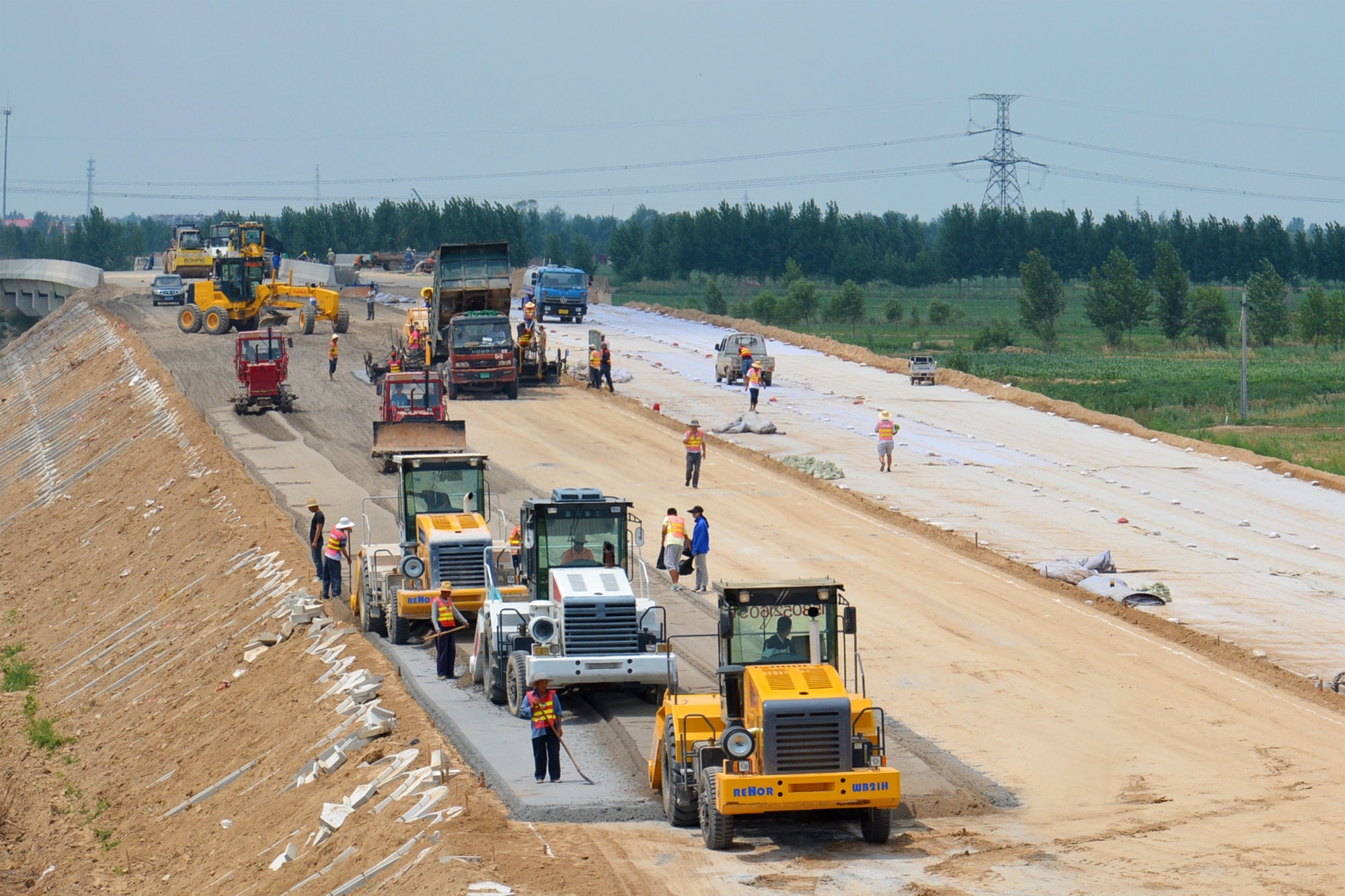
总结分析了再生剂性能的文献资料,RAP材料的沥青含量一般较高,目前资料上看常见的路油量范围为4.2%-4.8%。
After summarizing and analyzing the literature on the performance of rejuvenators, it was found that the asphalt content of RAP materials is generally high. Currently, the common range of road oil content in the literature is 4.2% -4.8%.
冷再生材料级配
Cold recycled material grading
国内研究中常见的路面级配:水泥冷再生材料一般选用《公路路面基层施工技术规范》中的级配范围;沥青(+水泥)稳定类材料篇采用路面设计规范中的AC13或AC20级配范围,也有采用再生规范中的级配范围。
Common pavement gradation in domestic research: Cement cold recycled materials are generally selected within the gradation range specified in the Technical Specifications for Construction of Highway Pavement Bases; The asphalt (+cement) stabilized materials section adopts the AC13 or AC20 grading range in the pavement design specifications, as well as the grading range in the regeneration specifications.
其他曾经使用的级配有:维特根手册中的级配范围、ARRA法中的级配范围、贝雷法控制级配,也有研究者自行设计级配。
Other previously used grading methods include the grading range in the Wittgen Handbook, the grading range in the ARRA method, the Berry method for controlling grading, and some researchers designing their own grading.
冷再生材料成形
Cold recycled material forming
冷再生材料的性质与传统道路材料不完全相同,因而对成形的要求也不完全相同。冷再生材料按再生剂大致可以区分为两类:
The properties of cold recycled materials are not completely the same as traditional road materials, so the requirements for forming are also not completely the same. Cold recycled materials can be roughly divided into two categories based on the regeneration agent:
无机再生剂和沥青再生剂,沥青再生时往往加入少量水泥以提高其抗水损坏能力。常用的无机再生剂是水泥,其他还有二灰、水泥粉煤灰等。
Inorganic rejuvenators and asphalt rejuvenators often add a small amount of cement to improve their resistance to water damage during asphalt regeneration. The commonly used inorganic rejuvenator is cement, and there are other types such as fly ash and cement fly ash.
无机稳定冷再生一般按照传统的半刚性材料进行成形和养生。常温下进行重型击实试验或者振动击实试验,在20℃或者25℃下养生7天。
Inorganic stable cold regeneration is generally formed and cured using traditional semi-rigid materials. Conduct heavy compaction test or vibration compaction test at room temperature, and maintain for 7 days at 20 ℃ or 25 ℃.
通过含水量-强度关系确定佳含水量。沥青稳定剂冷再生时的情况比较复杂,尚无统一方法。
Determine the optimal moisture content through the relationship between moisture content and strength. The situation during cold regeneration of asphalt stabilizers is quite complex, and there is no unified method yet.
冷再生材料组成设计方法常见的方法是用击实法确定佳液体量,用马歇尔稳定度、干劈裂强度、湿劈裂强度中的一个或几个达到优来确定沥青用量。
The common method for designing the composition of cold recycled materials is to use the compaction method to determine the optimal liquid volume, and to use one or more of Marshall stability, dry splitting strength, and wet splitting strength to determine the optimal asphalt dosage.
阅读/ Recommended reading
- 冷再生机租赁国道改建显“神功” 2025-10-30
- 冷再生机租赁助四川平昌加快公路提档升级改造 2025-10-29
- 冷再生机租赁助力公路养护中心进行公路工程建设 2025-10-28
- 冷再生机凭借其节约能源养护时间短助力公路部门快速建设 2025-10-27
S102济青线诸城曹家泊高密柴沟段、高密柴沟高密胶州界段修复养护工程施工项目冷再生试验段建设在柴沟镇区东、西两个标段同步展开。潍坊市公路事业发展中心、潍坊交通发展集团、高...





